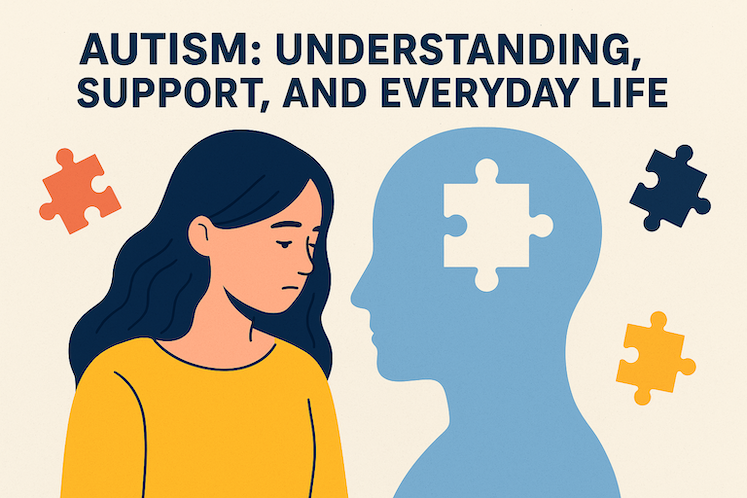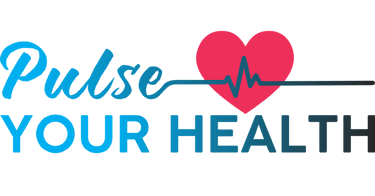Stay updated on what is trending in health. Discover tips and resources for a healthier, balanced life.
Autism: Strengths, Challenges, Support, and Everyday Life
Autism explained: discover risks, causes, signs, symtoms, spectrum levels, strengths, challenges & practical ways to support people with autism in everyday life
MENTAL HEALTH
Dr. S. Ali
10/3/20256 min read


When people hear the word autism, many different images come to mind. Some picture a child who doesn’t talk much, while others think of someone with amazing memory skills or a deep passion for a particular subject. The truth is, autism — or Autism Spectrum Disorder (ASD) — is not one-size-fits-all. It’s a spectrum, which means each person’s experience is unique. Let’s break down what autism is, the signs to look for, and how we can better support people on the spectrum.
What is Autism Spectrum Disorder (ASD)?
Autism is a developmental condition that affects how a person communicates, interacts, and experiences the world around them. The term spectrum is important — it highlights that autism shows up in many different ways, from very mild to more noticeable challenges.
Some people with autism may need daily support, while others live independently and thrive in their careers and relationships.
Different Levels of Autism – Understanding the “Spectrum”
Autism is often described as a spectrum, and that word is key to understanding it. Instead of being one single condition that looks the same in everyone, autism can show up in many different ways and at different levels of support needs.
Some people on the spectrum may need very little support in their daily lives. They might have unique social or communication styles but manage school, work, and relationships quite independently. Others may need more consistent support, especially with things like communication, learning, or handling sensory challenges.
You might hear professionals talk about “levels of autism” — these are simply ways to describe how much help a person may need. But it’s not about ranking someone as “more” or “less” autistic. It’s about recognizing that each person’s experience is unique.
Think of it like colors on a rainbow: each shade is different, but all are part of the same beautiful spectrum.
Signs and Symptoms of Autism
Autism usually appears in early childhood, often before age three. Signs can vary, but common ones include:
Difficulty with back-and-forth conversations.
Repeating words, phrases, or behaviors.
A strong need for routines and predictability.
Sensitivity to sounds, lights, or textures.
Intense focus on specific interests or hobbies.
It’s important to remember that showing one or two of these traits doesn’t mean someone has autism. Diagnosis requires a full evaluation by healthcare professionals.
Autism in Children vs. Adults
While autism is usually diagnosed in childhood, many adults are also diagnosed later in life. For some, finally getting that diagnosis brings relief — it helps explain their lifelong challenges with social situations, sensory overload, or maintaining routines.
Children with autism may face difficulties at school, but with the right support, many do very well academically. Adults may encounter challenges in the workplace, but more and more companies are recognizing the strengths of autistic employees, such as attention to detail, creativity, and problem-solving skills.
Strengths & Abilities in Autism
When people hear the word “autism,” they often think only about challenges. But it’s just as important to recognize the unique strengths and abilities that many autistic individuals bring to the table.
For example, some people with autism have exceptional focus — they can dive deep into a topic and learn every detail about it, becoming true experts. Others have incredible creativity, whether that’s in art, music, problem-solving, or coming up with out-of-the-box ideas. Many autistic individuals also have a strong eye for detail, spotting patterns or inconsistencies that others might miss.
These strengths can be powerful in education, work, and everyday life. Celebrating them not only boosts confidence but also helps society appreciate the diverse contributions of people on the spectrum.
Causes and Risk Factors
Researchers don't know the exact cause of autism, but they believe it's linked to a combination of genetics and environmental influences that affect early brain development. It's important to understand that there is no single cause, and many factors may contribute. Risk factors that can increase the likelihood of a diagnosis include:
Family history of autism. Having a sibling or parent with autism spectrum disorder slightly increases the risk for other children in the family.
Older parents at the time of birth. Children born to older parents, particularly an older father, have a higher associated risk.
Certain genetic conditions. Autism is more common in individuals with specific genetic disorders, such as Fragile X syndrome, Rett syndrome, and tuberous sclerosis.
Low birth weight and premature birth. Babies born with a very low birth weight or significantly before their due date may have an increased risk.
Prenatal exposure. Some research suggests that exposure to certain medications or environmental toxins during pregnancy may be a factor, though this is an area of ongoing study.
It's crucial to remember that having a risk factor does not mean a child will develop autism. Many children with one or more risk factors do not have the condition, and some children with autism have no known risk factors.
Living with Autism
Life with autism may look different, but “different” doesn’t mean “less.” Many people on the spectrum lead meaningful, fulfilling lives — building friendships, pursuing higher education, excelling in creative fields, or thriving in successful careers. The journey may come with its own challenges, but with the right support, growth and independence are absolutely possible.
Therapies and resources can make a big difference. For example, speech therapy can strengthen communication skills, occupational therapy helps with daily living and sensory integration, and behavioral therapy can support social interactions and coping strategies. Beyond that, parent and caregiver support groups provide a space to share experiences, learn practical tips, and feel less alone.
Just as important as professional support is the environment at home and in the community. Families often find that patience, acceptance, and understanding go a long way. Creating a safe and predictable space helps children feel secure, while celebrating their unique strengths builds confidence. Over time, many individuals with autism develop strong self-advocacy skills and discover ways to share their gifts with the world.
Autism may shape how someone experiences life, but it doesn’t define what’s possible. With compassion and the right tools, people with autism — and their families — can thrive.
Challenges People May Face
At the same time, living with autism can come with certain challenges. These vary widely from person to person, since autism is a spectrum.
Some individuals may find communication difficult — whether that’s understanding social cues, starting conversations, or expressing themselves clearly. Others experience sensory sensitivities, such as being very sensitive to sounds, lights, textures, or smells, which can sometimes feel overwhelming. Social situations may also be tricky, as interaction difficulties can make it harder to form friendships or feel comfortable in group settings.
It’s important to remember that these challenges don’t define a person — they are just one part of their experience. With understanding, support, and the right strategies, many autistic individuals navigate these hurdles and lead fulfilling, meaningful lives.
How Can We Support People with Autism?
Supporting someone with autism starts with understanding, patience, and respect. No two people on the spectrum are exactly alike, so the best support often comes from being open-minded and willing to listen.
Instead of making assumptions, take time to get to know the person as an individual — their strengths, their preferences, and what might feel overwhelming for them. Communication can look different too. Some people may use fewer words, some may prefer writing or technology, and others may need extra time to respond. A little patience goes a long way in helping conversations feel comfortable.
Sensory needs are also an important part of everyday life for many people with autism. Bright lights, strong smells, or loud environments might feel overwhelming. Respecting these needs — whether it’s allowing someone to use noise-canceling headphones, creating a quieter space, or simply understanding when they need a break — shows care and consideration.
Most importantly, celebrate strengths and encourage passions. People with autism often have remarkable talents, from creativity and problem-solving to attention to detail. By focusing on abilities rather than limitations, we create opportunities for growth, confidence, and success.
In short, support isn’t about “fixing” someone — it’s about valuing who they are and helping them thrive in a world that sometimes moves too fast or feels too loud.
Final Thoughts
Autism is part of human diversity. People on the spectrum bring unique perspectives and strengths to our communities. By learning more about autism and showing compassion, we can create a world where everyone feels included and supported.
If you or a loved one suspect autism, don’t hesitate to reach out to a healthcare professional for guidance. Early support can make a meaningful difference — but it’s never too late to seek help.
Related Articles:
Asperger's Syndrome and Autism: Understanding the Spectrum with Compassion
Sources:
Centers for Disease Control and Prevention (CDC) – Autism Spectrum Disorder (ASD)
https://www.cdc.gov/autism/index.html
National Institute of Mental Health (NIMH) – Autism Spectrum Disorder
https://www.nimh.nih.gov/health/topics/autism-spectrum-disorders-asd
World Health Organization (WHO) – Autism spectrum disorders
https://www.who.int/news-room/fact-sheets/detail/autism-spectrum-disorders
Mayo Clinic – Autism spectrum disorder
https://www.mayoclinic.org/diseases-conditions/autism-spectrum-disorder/symptoms-causes/syc-20352928
Harvard Health – Autism spectrum disorder (ASD)
https://www.health.harvard.edu/mind-and-mood/autism-the-challenges-and-opportunities-of-an-adult-diagnosis
Pulse Your Health
Empowering you to achieve your health goals.
Contact
© 2025. All rights reserved.
Disclaimer: The content on this website is for informational purposes only and is not medical advice. Always seek the advice of your physician or other suitably qualified healthcare professional for diagnosis, treatment and your health related needs.
